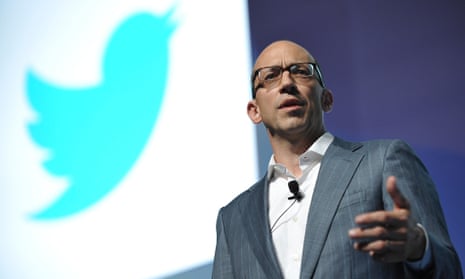Twitter has announced a crackdown on abuse on its network, unveiling a new filter designed to automatically prevent users from seeing threatening messages.
Every user’s notifications - the timeline of messages directed at them - will be filtered for the first time, in an effort to prevent people from being confronted by abusive messages.
The social media company is also banning indirect threats of violence, and will introduce temporary suspensions for accounts that fall foul of its policies.
The latest overhaul of Twitter’s safety features comes after a leaked memo from the company’s chief executive, Dick Costolo, laid out in frank language its failures to get on top of harassment on the site. “We suck at dealing with abuse and trolls on the platform, and we’ve sucked at it for years,” Costolo wrote.
“I’m frankly ashamed of how poorly we’ve dealt with this issue during my tenure as CEO. It’s absurd. There’s no excuse for it. I take full responsibility for not being more aggressive on this front. It’s nobody else’s fault but mine, and it’s embarrassing.”
With the new filtering, tweets sent directly to an individual which are from a recently registered account and use language similar to previously flagged messages will not automatically show up in a user’s mentions column. The filtered tweets will still exist on the service, and won’t be deleted, but the user being targeted will not see the harassment.
The new filter is based on an optional “quality filter” previously made available to verified users. That filter also screens out tweets automatically deemed to be abusive, but is far stricter about what makes it through the net than the new one. Unlike the quality filter, however, the new feature is automatically on for all users and cannot be turned off.
“This feature takes into account a wide range of signals and context that frequently correlates with abuse including the age of the account itself, and the similarity of a Tweet to other content that our safety team has in the past independently determined to be abusive,” says Shreyas Doshi, the company’s head of product management.
“It will not affect your ability to see content that you’ve explicitly sought out, such as tweets from accounts you follow, but instead is designed to help us limit the potential harm of abusive content. This feature does not take into account whether the content posted or followed by a user is controversial or unpopular.”
On top of the new filter, Twitter is rolling out two further changes to its policies in an attempt to improve safety on the service for its users.
Firstly, the rules against making threats have been tightened up. “Direct, specific threats of violence against others” have always been banned on the service, but that prohibition now extends to “threats of violence against others or promot[ing] violence against others”.
“Our previous policy was unduly narrow and limited our ability to act on certain kinds of threatening behavior. The updated language better describes the range of prohibited content and our intention to act when users step over the line into abuse,” says Doshi.
Secondly, for users who do breach the company’s terms of service, a new tier of sanction has been introduced. Previously, the company’s only options were to ban an account, or refrain from taking action, but now it will begin to impose temporary suspensions on users who it does not feel justify a full ban from the service.
“This option gives us leverage in a variety of contexts, particularly where multiple users begin harassing a particular person or group of people,” Doshi says. The accounts can also be unlocked if certain conditions are being fulfilled, such as the offending user providing Twitter with their phone number for verification purposes, or deleting the problem tweets.
Zoe Quinn, the game developer whose online harassment eventually spawned the anti-feminist GamerGate movement, said it was “nice to see Twitter trying to address this issue”.
“Twitter’s kind of stuck with an unenviable, enormous task given their huge userbase and the format of the platform, but it’s good to see them actively stepping up beyond admitting that they should step it up. Many companies don’t even make it that far, even when they have far less in terms of users and reach,” Quinn said.
“The most heartening thing in all of this, though, is seeing that they’re expanding their definition of what counts as a threat beyond the hyper-narrow ‘specific threats’ definition that tends to require things like explicit plans on how someone is going to murder you, but would exclude someone saying that they are going to murder you,” Quinn added.
The feminist activist Caroline Criado-Perez, who was subjected to a year-long harassment campaign that eventually saw two people jailed, welcomed the changes, saying that “it’s never too late for social media companies like Twitter to take abuse seriously”.
She adds: “Obviously, we will have to wait to see how these changes get applied in reality, but on the face of it, this looks like a very positive forwards step for Twitter. I’m really pleased to see them taking their responsibility to foster a platform for free speech and debate by creating a platform where people can speak without fear.”
At the same time, the company has been building up its anti-abuse features since before Costolo’s memo leaked. In December 2014, the company rolled out improvements to its blocking function, and began letting users report abuse directed at others, as well as themselves. In February, it improved its reporting functionality further, and in March, it tripled the number of staff dedicated to responding to reports.

Comments (…)
Sign in or create your Guardian account to join the discussion